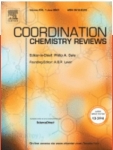This work aimed to study for the first time to our knowledge the influence of the structure of the dental flosses (DF) coated by hydroxyapatite nanoparticles (HAP NPs) on the biological performance of saliva probiotic bacteria (S. salivarius), and human dermal and osteoblast-like cells. We used three types of HAP@DF composites (based on two unwaxed dental flosses - “fluffy” and “smooth”, and one waxed “smooth”) with different morphologies. Obtained composites were characterized from the point of view of their structure, morphological characteristics, elemental and chemical composition.
We observed that HAP NPs coated “smooth” dental flosses led to an increase of viability and proliferation of oral cavity probiotic bacteria (Streptococcus salivarius) and human cells (dermal fibroblasts and osteoblast-like). In contrast, the highest viability loss of probiotic bacteria (S. salivarius), fibroblasts, and osteoblast-like cells were observed for “fluffy” unwaxed dental flosses due to high cytotoxicity.
Our studies showed that HAP NPs significantly improved the biological properties of “fluffy” dental floss. Pristine “smooth” DFs (waxed and unwaxed), as well as all HAP-coated DFs, induced acceptable biocompatibility toward selected human cells.



